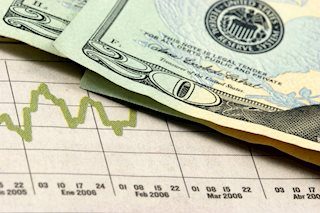Forex Today: Worst week since July for the Dollar
|
The US Dollar experienced its worst weekly decline since May, with negative momentum prevailing. Next week will be a shortened week in the US due to Thanksgiving. The key economic report to watch will be the preliminary November PMIs.
Here is what you need to know for next week:
The US Dollar Index (DXY) recorded a loss of 1.65% during the week, marking its worst performance since July. Data showed further softening in inflation, which weighed on the Greenback by reinforcing the market's belief that the Federal Reserve has finished raising interest rates.
US Treasury yields declined, putting additional pressure on the US dollar. Meanwhile, risk appetite prevailed, boosting Wall Street to its third consecutive weekly gain and reaching its highest level in eight weeks.
The Federal Reserve (Fed) will release the minutes of its latest meeting on Wednesday but it could easily be a non-event considering the latest economic reports and Fed Chairman Jerome Powell's comments.
Wednesday will be a busy day with many important reports, ahead of the Thanksgiving holiday: the weekly Jobless Claims, Durable Goods Orders, and the University of Michigan Consumer Sentiment (final reading).
The short-term momentum for the US Dollar remains firmly tilted to the downside. However, fundamentals indicate that US economic growth is above trend, while the Eurozone is either heading toward or already in a recession. This divergence suggests that the decline of the Dollar may not be without the risk of sharp corrections.
EUR/USD broke above 1.0750 and surpassed the 20-day Simple Moving Average (SMA), setting the outlook for more gains. The 1.10 mark is not far away. On Monday, Germany will release the Producer Price Index (PPI) for October. On Thursday, the Eurozone Manufacturing PMIs preliminary readings for November are due. Additionally, the European Central Bank (ECB) will release the minutes of its latest meetings.
Analysts at ING on EZ PMI:
The PMIs have been pretty weak, too. We don't expect any meaningful pickup for November as the economy suffers from weak consumption, slowing investment and sluggish external demand at the moment. A modest negative GDP growth rate for the fourth quarter is our base case for the time being.
GBP/USD resumed its upside, reaching 1.2500 before losing strength. The short-term outlook is bullish, but the Pound continues to lag behind. The Monetary Policy Report Hearings will take place on Wednesday, when the Bank of England Governor and members of the Monetary Policy Committee will testify on inflation and the economy before the Parliament's Treasury Committee. On Thursday, the UK government will present its Autumn Statement in the House of Commons.
USD/JPY had the biggest weekly loss since July, amid a weaker US Dollar and lower Treasury yields. However, the Yen hit fresh cycle lows against other currencies amid risk appetite. USD/JPY looks poised to extend the correction after a double top near 152.00. On Friday, the National Consumer Price Index is due.
AUD/USD hit monthly highs above the crucial resistance at 0.6520 but failed to hold above. Risks appear tilted to the upside, but the Australian Dollar has so far remained within the recent range. Reserve Bank of Australia (RBA) Governor Michele Bullock will deliver a speech on Tuesday, a day before the release of the RBA accounts of the last meeting when the central bank raised the official Cash Rate (OCR) by 25 basis points. Bullock will speak again on Wednesday.
NZD/USD tested the 0.6050 area again and pulled back below 0.6000, ending below the 20-week SMA, hovering around 0.5980, suggesting that the pair is not yet ready for more gains. A break above 0.6050 would likely trigger a bullish acceleration. On Friday, New Zealand will report Q3 retail sales.
USD/CAD continues to move in a range between 1.3870 and 1.3630. The area near 1.3900 continues to be a crucial barrier that, if broken, could set the pair up for further gains. While a decline to 1.3545 (20-week SMA) seems likely if it breaks 1.3630. Canada will release the October Consumer Price Index on Tuesday and Retail Sales data on Friday.
After falling for two weeks, Gold rebounded sharply, boosted by lower US yields. XAU/USD approached $2,000 but failed to reclaim that area. The risk appears tilted to the upside. Silver had its best week in months, surging from $22.40 to $24.15, but pulled back below $24.00 late on Friday.
Like this article? Help us with some feedback by answering this survey:
Information on these pages contains forward-looking statements that involve risks and uncertainties. Markets and instruments profiled on this page are for informational purposes only and should not in any way come across as a recommendation to buy or sell in these assets. You should do your own thorough research before making any investment decisions. FXStreet does not in any way guarantee that this information is free from mistakes, errors, or material misstatements. It also does not guarantee that this information is of a timely nature. Investing in Open Markets involves a great deal of risk, including the loss of all or a portion of your investment, as well as emotional distress. All risks, losses and costs associated with investing, including total loss of principal, are your responsibility. The views and opinions expressed in this article are those of the authors and do not necessarily reflect the official policy or position of FXStreet nor its advertisers.